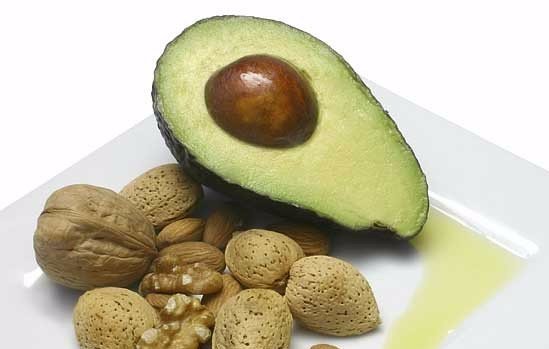The #1 Nutrient You Must Eat and the 7 Best Ways To Get It
Let’s get right to the point. It’s Fiber.
Too bad we’re not getting nearly enough.
One study titled “Trends in dietary fiber intake in the United States, 1999-2008,” published in the Journal of the Academy of Nutrition and Dietetics , found the average person gets about 15 grams of fiber a day, well below the 25-38 grams recommended adequate intake for adults.
Among its numerous benefits, fiber can help you lose weight. That’s because it helps slow down stomach emptying so you feel fuller longer.
Studies show fiber also suppresses your hunger hormone ghrelin and stabilizes blood sugar and insulin levels. It fills you up faster for fewer calories.
Those are among the reasons I call fiber a magic bullet for fast, lasting fat loss. A recent study published in the Annals of Internal Medicine supports my theory.
Researchers asked 240 participants to either eat fewer calories and follow the American Heart Association’s diet or simply get more dietary fiber.
One year later, the fiber folks lost an average of 4.6 pounds , whereas the reduced-calorie group lost an average of six pounds. Impressive, considering the fiber group made no other dietary modifications.
To get fast, lasting fat loss and fiber’s other benefits, I want you to get 50 grams of fiber daily. Yes, 50.
Please don’t do this all at once. Gradually increase your intake five grams a week until you’ve met that quota. I’ve got seven easy ways to easily increase fiber intake:
- Non-starchy veggies. Leafy and cruciferous greens are nutrient and fiber powerhouses. Whether steamed, sautéed, or raw in salads, veggies definitely fall into the “more is better” category.
- Berries . Every one of these low-sugar impact fruits are high in fiber, but raspberries reign supreme with eight grams of fiber per cup.
- Avocado. Along with heart-healthy monounsaturated fat and hard-to-get fat-soluble nutrients like vitamins K and E, one cup of avocado provides an impressive 10 grams – that’s 40 percent – of your day’s fiber intake. Plus it makes everything so much more delicious.
- Slow roasted or dehydrated almonds. Loaded with protein, healthy fats, and hard-to-get nutrients like magnesium, a quarter-cup of slow-roasted or dehydrated almonds provides three grams of fiber. Almond butter provides those same benefits. Smear a little bit on some celery for a decadent fiber wallop!
- Lentils. Most legumes are fiber-packed, but I especially love lentils because they’re so darn versatile and delicious. In his book The 150 Healthiest Foods on Earth , Dr. Jonny Bowden notes one cup of lentils packs a whopping 16 grams, which officially makes them a fiber heavyweight.
- Freshly ground flaxseeds. Besides being an excellent source of the omega-3 fatty acid alpha-linolenic acid (ALA), flaxseed is rich in anti-cancer lignans, and two tablespoons provides almost four grams of fiber.
- Extra Fiber. Even the most well intended, health-minded folks occasionally struggle to meet their 50-gram daily fiber quota. That’s why I never travel without Extra Fiber , a top-of-the-line powder that combines 12 different types of fiber to mimic what you get in high-fiber whole foods. Every serving contains an impressive four grams of fiber and mixes well into shakes, water, or any preferred beverage.
A protein shake becomes my favorite way to increase fiber intake, which provides you steady, sustained energy all morning. Adding avocado, frozen raspberries, raw kale (you won’t taste it), and freshly ground flaxseed or Extra Fiber to my Paleo – or plant-based protein powder provides about 15 – 20 grams of fiber. Do one of these once or twice daily and you’ve almost hit your 50-gram quota.
OK everybody. Let’s head out to the supermarket.

